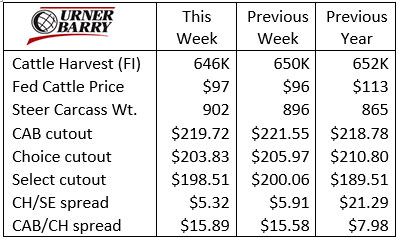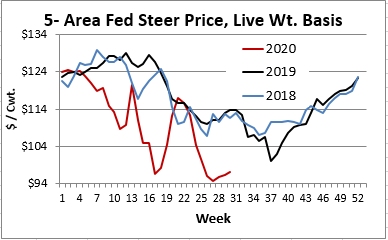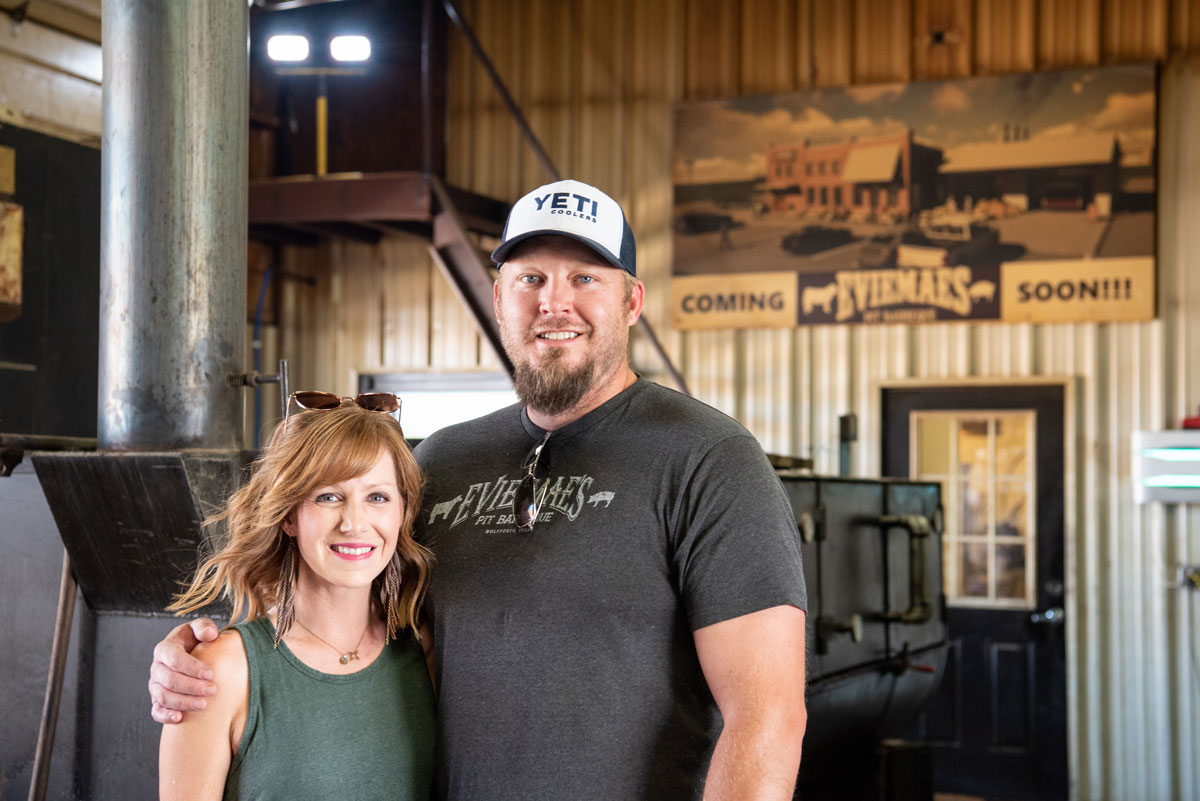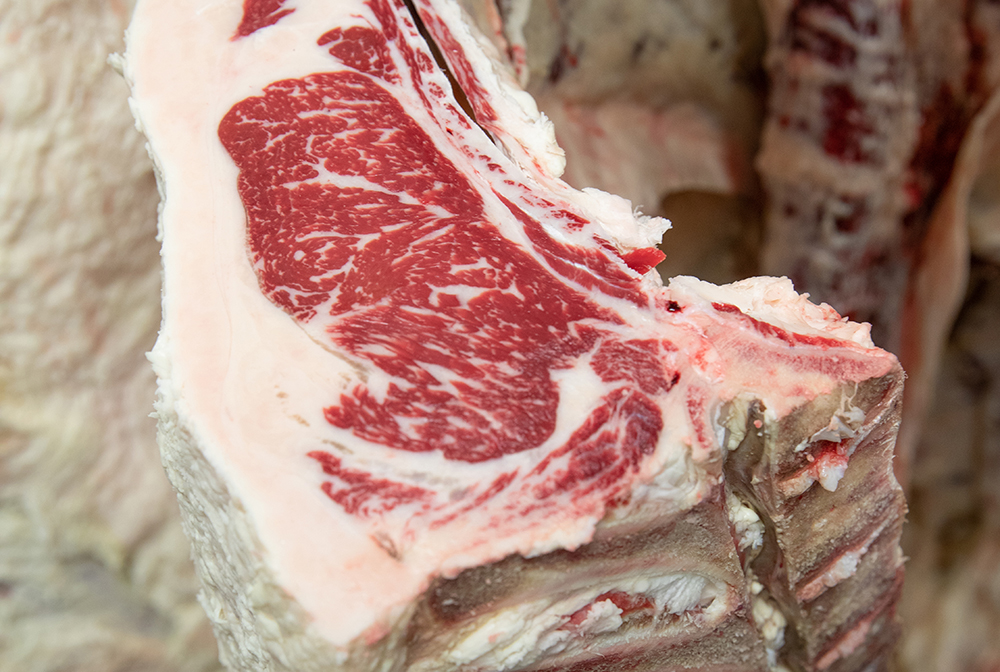
Greater eligibility assists CAB supply
Market Update
Fed cattle prices have stabilized and improved over the past three weeks with a $2.47/cwt. total increase for fed steers in the 5-area weighted average. The cattle feeding sector is moving along in small strides at this time, so this news fits the bill. The counterpoint is that last week’s $97.24/cwt. steer price average is 14.5% lower than the same week a year ago.
The slightly higher trend is a bit more heartening given that boxed beef cutout values continued to work lower again last week. The historical trend for cutout prices is to put in the summer low in mid- to late July.

This week will provide some answers as to whether or not we’re seeing a short-term low for cutout prices. Most cuts from the Choice and CAB reports showed fractionally lower prices last week, with a couple of cuts from the round slightly higher.
The only notable downward price on any single item remained solely with the 0x1 strip loins, which declined another $0.30/lb. with the CAB strips averaging $6.60/lb. at wholesale. A case could be made for lower values yet on strips, but ribeyes have ceased their rapid free-fall in the latest data, removing one important middle meat from the downward pull.

Analysts have pointed to current packer margins well over $200/head so there is limited fundamental pressure on fed cattle prices due to marginally lower cutout values.
Still, the backlog remains a factor, particularly so in the south. Feeders in the north appear to be more emboldened with a more current showlist last week allowing them to top the trading range at $100/cwt.
Greater eligibility assists CAB supply
Fed cattle and beef supply rank right at the top of the watch list this year and will remain there for quite some time. While the beef business has proven sensitive to supply chain disruptions, the Certified Angus Beef ® (CAB) brand is similarly driven.
A unique aspect of the brand is that only black-hided cattle are eligible for consideration for further USDA grading service review under the brand’s 10 carcass specifications. Consequently, the proportion of the fed cattle population that is black-hided is a key driver in long term sales growth. More eligible animals equates to potentially more qualifiers.
The first chart provides a 20 year history of the % Angus-type (CAB eligible) cattle entering packing plants for which USDA provides grading services. The 19.6 percentage point increase is profound and speaks to the popularity of Angus genetics. The CAB brand and consumer demand for high-quality beef backed by carcass specifications are arguably playing an important role.

Working a little closer to the current market situation the second chart depicts the 2020 year to date trends. The black line shows the % of carcasses eligible for CAB while the green bars represent the weekly CAB certified head count. It’s easy to spot the COVID-induced head count dip with a low of 67,000 head for the week of April 27th. We’d expect this given that the total fed cattle harvest also bottomed then due to packing plant closures.

Yet the “% eligible” line abruptly fell to 63% in unison with the harvest drop. Since that measure is not tied to total volume of animals harvested it gives one pause. Understanding that Colorado packers were the hardest hit is the key, as one temporarily closed and the other curtailed production. These two plants capture a larger share of black-hided cattle than those further south and they were not bolstering the average at that time.
In the prevailing weeks, however, a complete recovery of black-hided cattle is featured in the most recent data through July. As a matter of fact, the last 11 weeks show a 69% eligibility trend. Four of those weeks surpassed 70% eligible, a proportion touched only a dozen previous weeks in the past 20 years.
The move to record black-hided proportions may be more difficult to explain than the dip. Some feeders noted that the very small spot market trade occurring in many recent weeks saw fed cattle buyers focusing on CAB-eligible cattle since product supply was scarce and the margin for CAB boxed beef was high. Possibly more non-black cattle were held out of alternative pricing methods, intentionally directed toward the summer spot market. This would have seen those cattle left standing in the feedlot as the backlog progressed.
In any case, greater eligibility is joining up with higher quality grades to increase July certified head counts above those seen a year ago.
Adjusted sights, Targeting the Brand™
Bull buying decisions are possibly the least germane topic for many cattlemen in July, yet the Angus bull sale calendar heats up in California and other fall calving regions of the country in just over a month.
Genetic selection is one of the primary factors impacting CAB carcass certification rates. Inherent breed characteristics favor Angus sires for adding marbling and overall carcass acceptability. Yet research trials and stacks of carcass data summaries show that intentional selection toward carcass traits makes a significant impact.
Our Supply Development team first set out genetic recommendations to assist cattlemen in buying bulls that target CAB carcass outcomes beginning in 2007. The Targeting the Brand™ program evolved from those guidelines, using a logo (seen below) to highlight bulls that meet recommended baselines for carcass traits. The two most relevant genetic predictors among the many numbers available are the Marbling EPD (expected progeny difference) and $Grid index.
Earlier this summer we incorporated detailed carcass data on 8,600 sired-identified Angus animals through the American Angus Association to update the benchmarks. The numbers in the table above have been adjusted higher than the previous recommendations based on that information. Most importantly, they reflect the genetic profile of the sires of those harvested animals which indicates that bulls with a Marbling and $Grid number at or above these thresholds are more likely to produce calves meeting CAB carcass standards at the rate of 50%.
The 50% goal is only significant in that it’s well above the industry average of 35% CAB acceptance achieved last year. Cattlemen more dedicated to carcass traits have far outpaced this achievement using a much higher standard than our recommendation. The Targeting the Brand™ recommendations are a tool to chart a course toward the goal rather than a treasure map that marks the gold.
DON’T MISS THE LATEST HEADLINES!
Start with focus

A little BBQ journey

Behind those scenes
Read More CAB Insider
$100,000 Up for Grabs with 2024 Colvin Scholarships
Certified Angus Beef is offering $100,000 in scholarships for agricultural college students through the 2024 Colvin Scholarship Fund. Aspiring students passionate about agriculture and innovation, who live in the U.S. or Canada, are encouraged to apply before the April 30 deadline. With the Colvin Scholarship Fund honoring Louis M. “Mick” Colvin’s legacy, Certified Angus Beef continues its commitment to cultivating future leaders in the beef industry.
Carcass Quality Set to Climb Seasonally
With the arrival of the new year the beef market will rapidly adjust to changes in consumer buying habits. This will remove demand pressure from ribs and tenderloins, realigning the contribution of these most valuable beef cuts to a smaller percentage of carcass value
Misaligned Cattle Markets and Record-high Carcass Weights
Few things in cattle market trends are entirely predictable but the fact that carcass weights peak in November is as close to a sure bet as one could identify. Genetic selection for growth and advancing mature size has fueled the long-term increase in carcass weights.

